*This post may contain affiliate links. Read more »
Out of the European influence on the cuisine of Vietnam, Banh Flan evolved from Spanish Flan, and French Crème Caramel.
Vietnamese cooks ingeniously adapted the traditional flan recipe to create Banh Flan, infusing it with their own distinct flavors and preferences. The dish became an embodiment of cultural fusion, symbolizing the resilience and adaptability of Vietnamese cuisine.


Enter your email & I'll send it to your inbox. Plus, get great new recipes from me every week!
By submitting this form, you consent to receive emails from Cinnamon Snail.
What makes this dreamy Vietnamese dessert different from regular ol’ flan? With a creamy, rich custard made from coconut milk, thickened with agar agar (a neutral-tasting sea vegetable powder), and a caramel that is deliciously dark brown from the minerals in coconut sugar, banh flan bears only basic structural similarities from its eggy French origins. This recipe is completely vegan and gluten-free, so everyone can love the absolute heck out of it!
Other than the frigid and wonderful che ba mau, this banh flan is gonna be your go-to recipe during the summer when you want a cool refreshing, and light dessert. It is the best way to finish a Vietnamese meal of stir fried noodles, steamed buns, or rice paper salad.
Don’t be scared. This is even easier to make than my vegan creme brûlée, and shucks, that one is pretty dang hard to be easier than. Grab some cute lil’ ramekins, because you got this!
*This post contains affiliate links, so I may earn a tiny commission when you make a purchase through links on my site at no additional cost to you.
Jump to:
🥰Why you'll adore this Vietnamese flan recipe
⏩ No-Bake ’n fast to make: Unlike many flans and custards, this particular Banh Flan recipe recipe doesn't require baking. Believe me, baked custards CAN be a bit finicky. There are all kinds of steps involving water baths, and techniques to prevent the formation of air bubbles.
📉 Low glycemic: Unlike many traditional desserts, the caramel for this recipe relies on the natural sweetness of maple syrup and coconut sugar, resulting in a lower dependency on regular sugar.
🌱 Vegan, Eggless, and Gluten-Free: This flan has all of the things (rich, creamy, flavorful) with none of the other things (violence towards animals, digestive nightmares, or violation of ethical or religious principles).
⏰ Make-Ahead Dessert: Planning a big dinner or special occasion? This Vegan Banh Flan is the perfect dessert to make a couple of days in advance. Unlike my apple cider donuts or homemade fritters that are best enjoyed fresh, this dessert actually benefits from being prepared ahead of time.
✅ This recipe is downright reliable: Like all the vegan recipes on my blog, this recipe has undergone rigorous testing by a massive group of recipe testers who used various brands of coconut milk and other ingredients.


👩🍳 Learn to make the DOPEST desserts
This 5-day guide to the best vegan sweets I have ever made is 100% FREE, & you'll love the actual heck out of it 🥰
🥥 Ingredients for this Vietnamese flan recipe
What’s notable about this recipe are the ingredients that are NOT in it, while the end result rivals any recipe in richness. This recipe is eggless, dairy-free, and contains no animal-derived thickeners such as gelatin.

Coconut milk
Coconut milk, known as "nước cốt dừa" in Vietnamese, adds a luscious and creamy texture to dishes. Fun fact: In Vietnamese cuisine, coconut milk is used in desserts and savory dishes like curries and soups. For a substitution, you can use almond milk or cashew milk to achieve a similar creaminess.
Coconut sugar
Referred to as "đường thốt nốt" in Vietnamese, coconut sugar is a natural sweetener derived from the dried sap of coconut palm trees. It has a lower glycemic index than regular sugar, and has more minerals in it, making it a popular choice for those seeking healthier alternatives. If coconut sugar is unavailable, you can substitute brown sugar or palm sugar, which is what I use to make ondeh ondeh.
Agar agar
Agar agar is a versatile powdered thickener derived from seaweed. The name is derived from the Malay word "agar-agar," which means "jelly." It is commonly used in Asian desserts and vegan cooking as a plant-based alternative to gelatin. If agar powder is not accessible, you can use the agar flakes, or substitute it with powdered carrageenan (aka Irish moss).
Vanilla extract
Vanilla, called "hương vani" in Vietnamese, is a fragrant and popular flavoring ingredient derived from the vanilla orchid. Vanilla is the second-most expensive spice in the world after saffron due to its labor-intensive cultivation process. The two insects known to pollinate vanilla orchids (Melipona and Euglema bees) have been dying off. Now, vanilla is often hand pollinated by human laborers, which has driven the price of an already costly ingredient through the roof. Thank goodness this recipe doesn’t call for a boatload of it.
If you don’t have the budget for natural vanilla, do not use artificial vanilla. Just leave it out completely, or substitute it with a different extract of your choice to give your banh flan a unique twist. You could use elderflower, orange blossom, jasmine, lemon, or hazelnut extract for a different, and exciting variation.
*See the recipe card at the bottom of the page for exact quantities, nutritional info, and detailed cooking directions.
🤯 Banh Flan Variations
Pandan Coconut Flan
Infuse the coconut milk custard with pandan leaf extract, a popular flavoring in Southeast Asian cuisine. Pandan, which I use a lot for making kuih dadar, adds a delicate, fragrant, and slightly sweet taste to the flan, beautifully complementing the creamy coconut base.
Pumpkin Flan
I actually have a complete pumpkin flan recipe you can follow. It really does make a gloriously easy, light dessert to serve at Thanksgiving!
Cardamom and Star Anise Flan
Give the custard some warm and aromatic notes by mixing in ground cardamom and two whole star anise seeds into the custard mixture. Use a good quality cardamom such as cloud forest cardamom, or smoked black ground cardamom if you can get it.
📖 How to make banh flan
Check out this photographic guide to making banh flan, or you can follow along with the easy-to-print recipe card towards the bottom of this page.

Step 1
Combine maple syrup, coconut sugar (or brown sugar), vanilla extract, and salt, in a medium-sized saucepan over medium heat.
Step 2
Cook for approximately three minutes until the mixture is bubbling and the sugar has dissolved.
Step 3
Remove from heat and carefully divide the caramel into the ramekins or molds, ensuring an even coating on the bottom. Set aside.
Step 4
Combine coconut milk, sugar, and vanilla extract in the same saucepan.
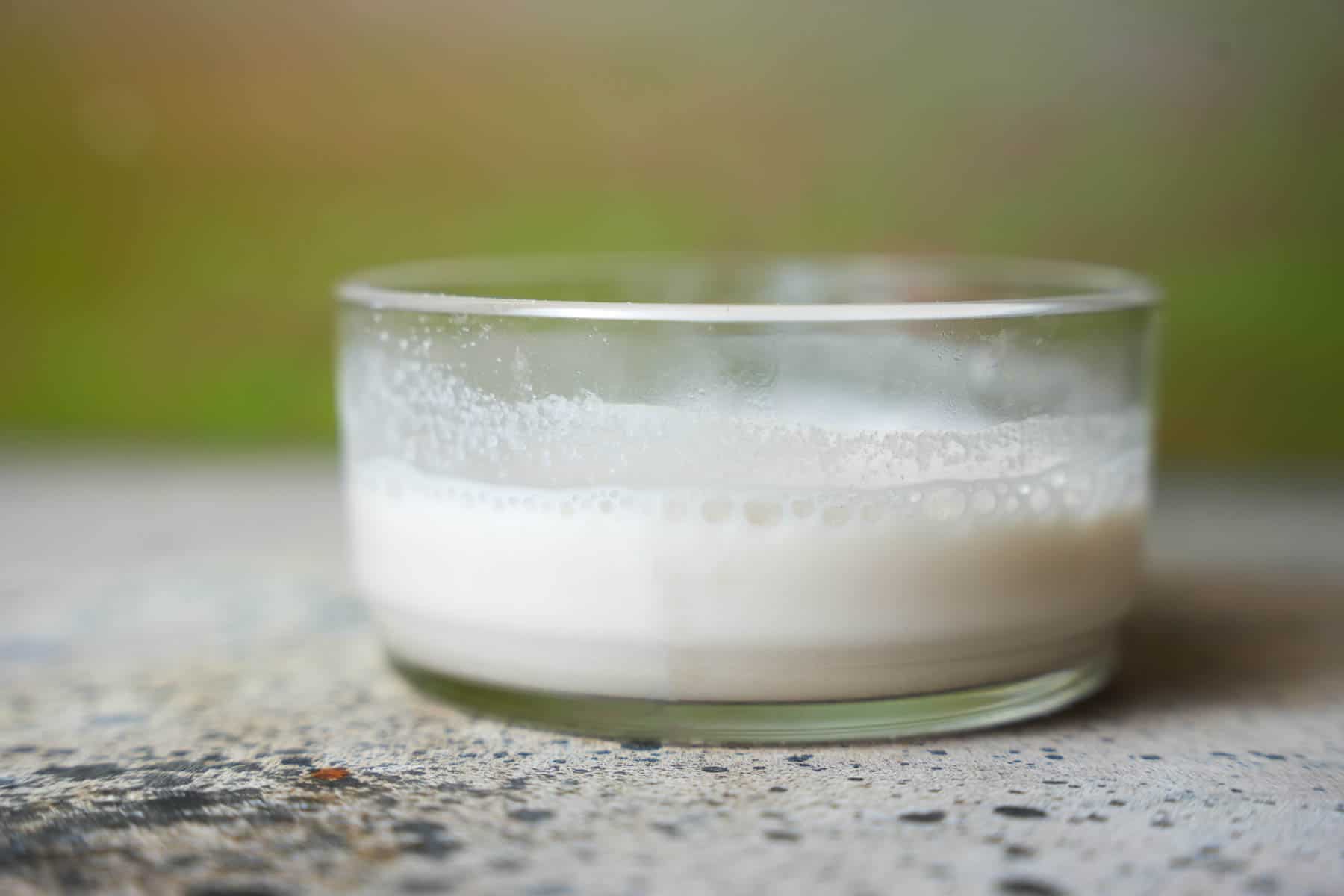
Step 5
In a small bowl or glass, using the tines of a fork mix the agar agar powder and cornstarch (or tapioca starch or arrowroot) with plant-based milk until well combined.

Step 6
Add the agar agar and starch mixture to the saucepan.
Place the saucepan over medium heat, stirring continuously until the mixture gently boils.
Reduce the heat to low and simmer for about three minutes, stirring constantly to thicken the custard.
Step 7
Carefully pour the custard mixture into the ramekins or mold with the caramel, filling them to the top.
Step 8
Chill the flans for at least 90 minutes until set. If chilling overnight or for longer, place the flans in an airtight container in your refrigerator.
Before serving, run a knife around the edges of each flan to loosen them.
Step 9
Place a serving plate over each ramekin or mold and carefully invert it to release the flan.

Step 10
Allow the caramel to drizzle over the flan, and optionally garnish with a pinch of cinnamon.
🍽️Serving Ideas
Banh flan lends itself just as easily as a dessert for Asian as for Western menus. It’s also much easier to make than other Southeast Asian desserts such as Che Ba, or Martabak Manis.
Serve it at the end of an Indonesian meal of dishes such as bami goreng, ketoprak, sayur lodeh (a hearty coconut milk vegetable curry), served over nasi miyak or nasi uduk betawi (pandan and coconut rice).
Vietnamese flan can make a perfect following act to a dim sum feast when you don’t want a very heavy dessert. Serve it after chee cheong fun, crispy wonton fried rice dumplings, or the wonderful Burmese noodle dish Khao suey.
Because of it's European influence, it’s not out of place at all following more Western classics, like my vegan fried chicken, and elotes.
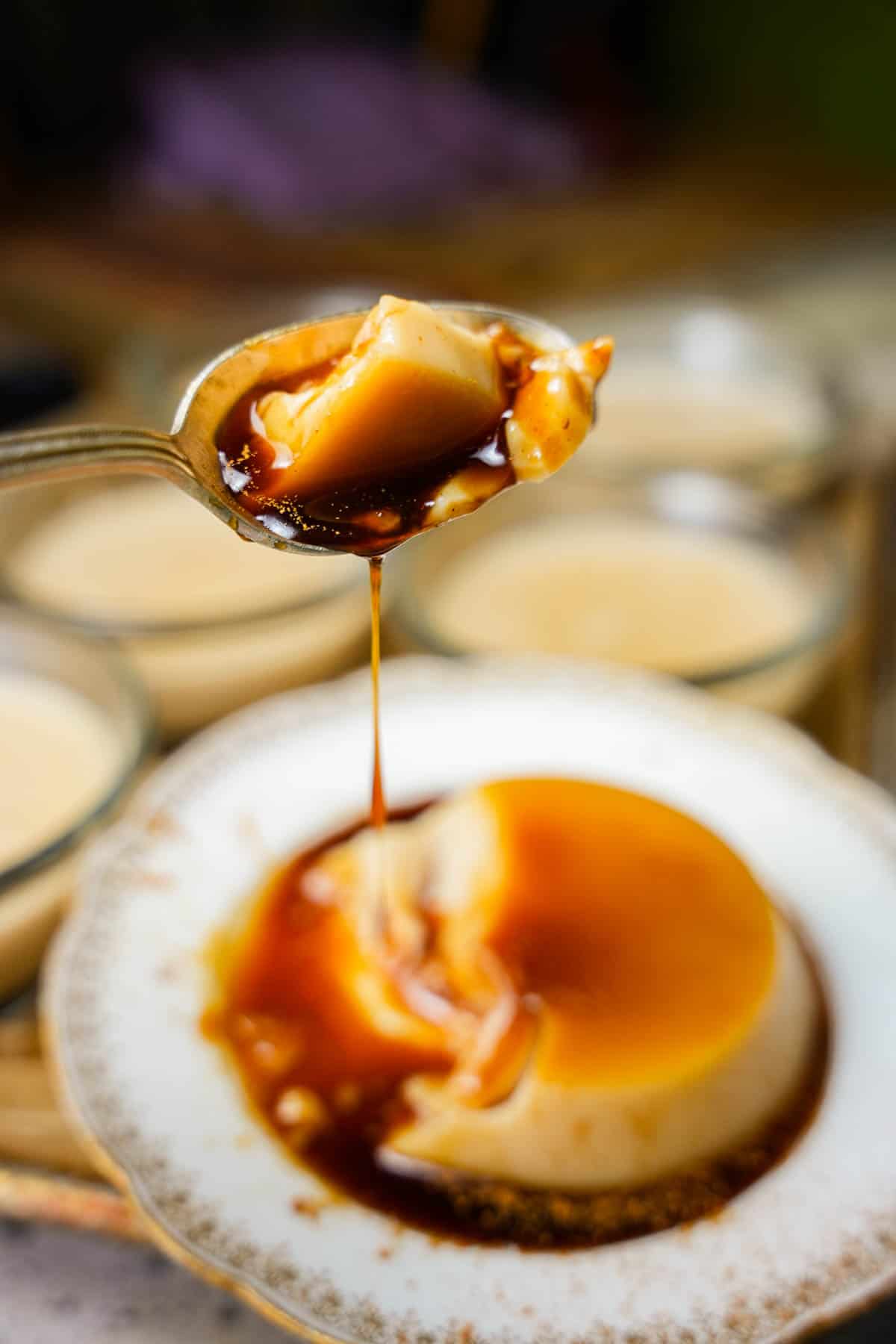
🤷♀️Recipe FAQs
Mexican flan and Vietnamese flan may appear similar as creamy custard desserts, but they have a few distinct differences. Mexican flan boasts a rich vanilla flavor accompanied by a deep caramel topping. On the other hand, Vietnamese Banh Flan incorporates coconut milk, and sometimes pandan, infusing subtle flavors that add a unique Southeast Asian twist to the classic custard taste.
Texture-wise, Mexican flan is renowned for its smooth and silky consistency made with evaporated milk, while Vietnamese Banh Flan, like many other starchy Vietnamese desserts, tends to be slightly firmer and denser. The caramelization process also sets them apart, with Mexican flan featuring a darker and deeper caramel layer compared to the lighter caramel found in Vietnamese Banh Flan. Mexican flan is often served in larger round molds or ramekins, while Vietnamese Banh Flan is traditionally presented in smaller, individual-sized ramekins or molds.
The history of Vietnamese flan, known as Banh Flan, is intertwined with Vietnam's colonial past. Introduced during the French colonial period, Banh Flan reflects the influence of French cuisine on Vietnamese culinary traditions. The French brought the concept of creme caramel made with whole eggs or egg whites, which eventually merged with local ingredients and flavors to create the Vietnamese adaptation. While it maintains the essence of the classic French flan, Vietnamese flan stands out with its use of either coconut milk, or sweetened condensed milk providing a distinct tropical twist. Today, Banh Flan is cherished as a delectable fusion of French and Vietnamese culinary heritage, showcasing the country's cultural diversity on the dessert plate.
✌️See ya later, ‘frigerator.
Once the Vegan Banh Flan has cooled completely, place each filled ramekin, right side up inside of a flat, airtight container. The flan can be stored in the refrigerator for up to three days.
🥶Avoid Freezing
Banh Flan should not be frozen. Freezing will negatively affect the texture and consistency of the custard, resulting in a watery and grainy texture upon thawing. Don’t make a gaggle of ponies cry every time you make this flan. 🚮 Simply throw the idea that you would ever freeze it in the trash, where it belongs.
🍵Serving Recommendations
When ready to serve, remove the flan from the refrigerator and allow it to come to room temperature for about 10 to 15 minutes. This will slightly soften the texture, making it feel creamier and richer.
✌️My faves to serve with banh flan:
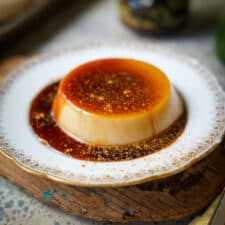
Banh Flan (Vietnamese Crème Caramel)
Ingredients
Caramel:
- ⅓ cup maple syrup
- ⅓ cup coconut sugar or brown sugar
- ½ teaspoon vanilla extract
- ¼ teaspoon salt
Flan base:
- 13.5 oz. coconut milk
- ⅓ cup sugar
- 1 teaspoon vanilla extract
- 1 ¼ teaspoon agar agar powder
- 1 teaspoon cornstarch or tapioca starch or arrowroot
- ⅔ cup unsweetened plant-based milk
Optional garnish:
- 1 teaspoon Vietnamese cinnamon
Instructions
Caramel:
- In a medium-sized saucepan over medium heat, combine the maple syrup, coconut sugar (or brown sugar), vanilla extract, and salt.
- Tee caramel only needs to cook for about three minutes until it is bubbling and the sugar has dissolved.
- Remove the caramel from the heat and carefully pour it into the ramekins or mold you'll be using for the flan. Tilt and rotate the ramekins to evenly coat the bottom with caramel. Set aside.
Custard Base:
- In the same saucepan you cooked the caramel in, combine the coconut milk, sugar, and vanilla extract.
- In a small bowl, mix the agar agar powder and cornstarch (or tapioca starch or arrowroot) with the plant-based milk until well combined.
- Add this mixture to the saucepan.
- Place the saucepan over medium heat and stir continuously until the mixture comes to a gentle boil. Reduce the heat to low and simmer for three minutes, stirring constantly, to activate the agar agar and thicken the custard.
- Carefully pour the custard mixture into the ramekins or mold with the caramel, filling them to the top.
- Refrigerate for a minimum of 90 minutes until set. For best results, refrigerate the flans overnight to ensure a firm texture.
To Serve:
- To unmold the flans, run a knife around the edges to loosen them. Place a serving plate over the ramekin or mold, then carefully invert it, allowing the caramel to drizzle over the flan.
Notes
- If the flan doesn't release easily, gently tap the bottom of the ramekin or mold or apply slight heat with a kitchen torch to help loosen it.
- Either serve the Vegan Banh Flan chilled, or leave it out of the refrigerator for 10-15 minutes to soften a little before serving.

Enter your email & I'll send it to your inbox. Plus, get great new recipes from me every week!
By submitting this form, you consent to receive emails from Cinnamon Snail.

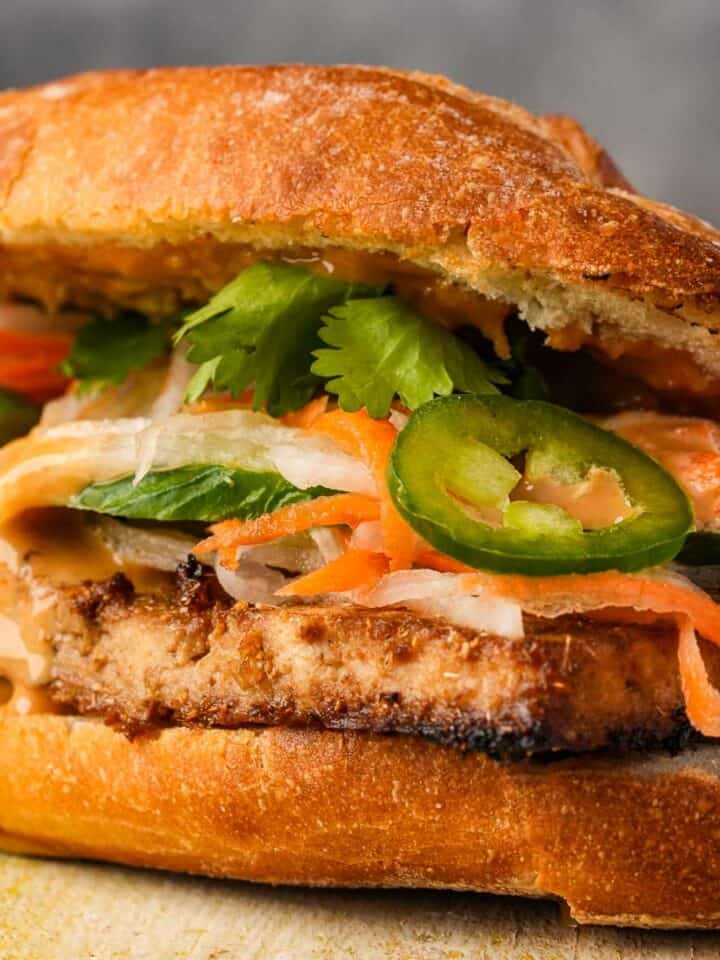
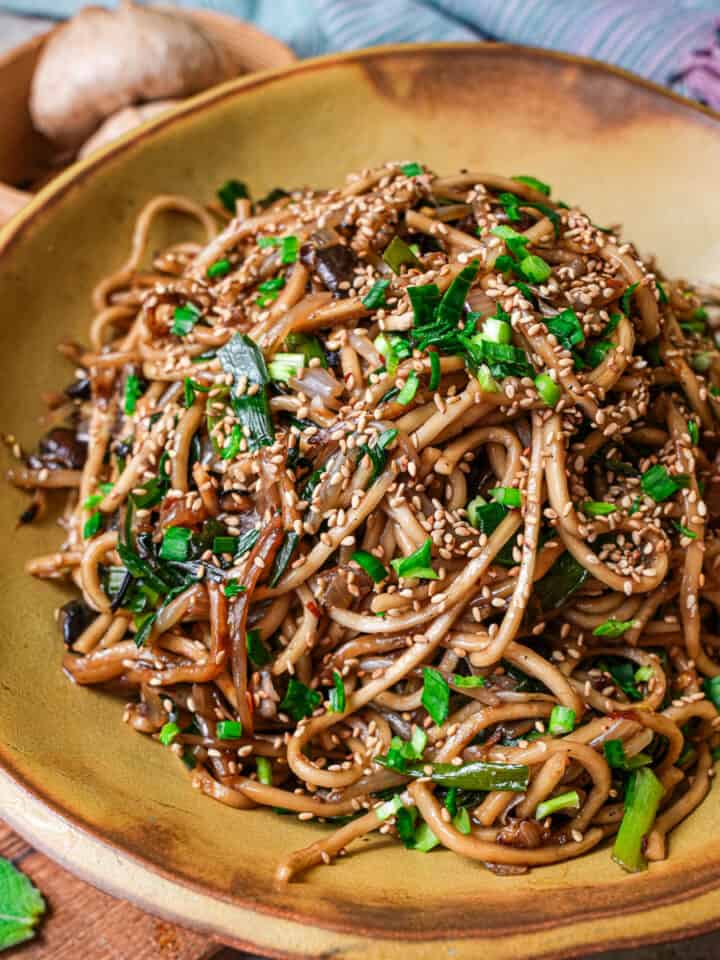

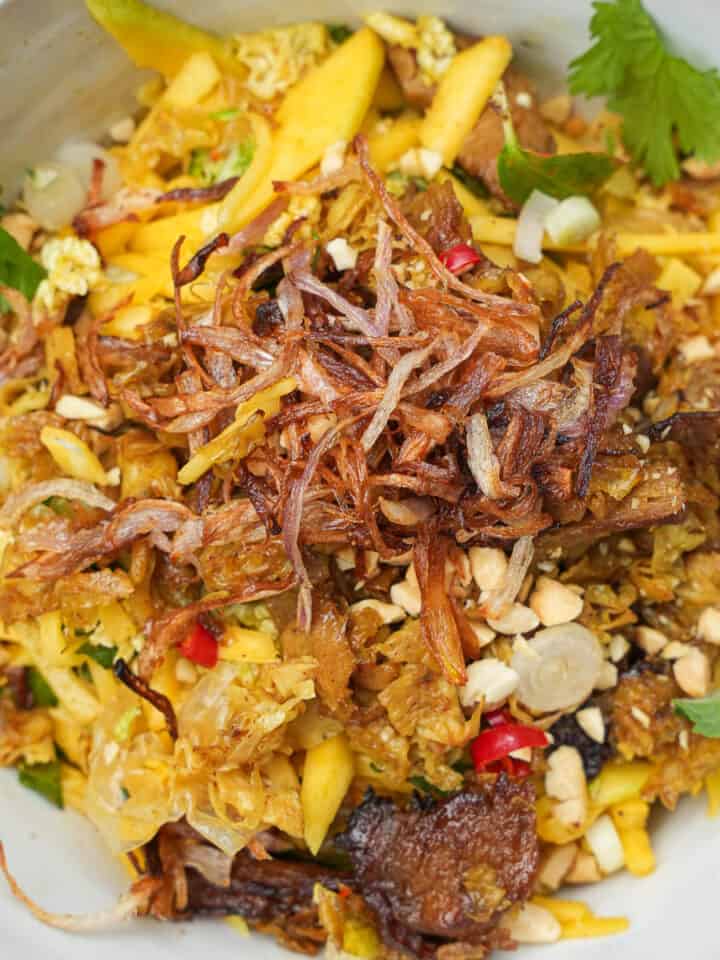


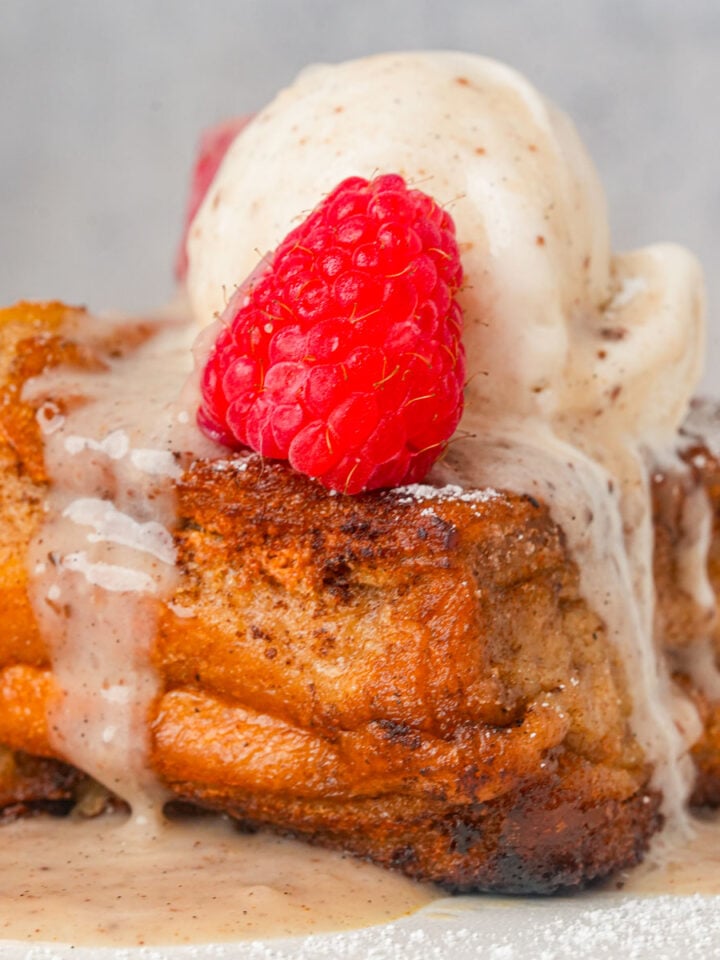



Andrea says
LMG! Sooo good. I couldn‘t find agar powder so had to use the flakes. That took a bit longer to dissolve but i figured it out and this flan is amazing!